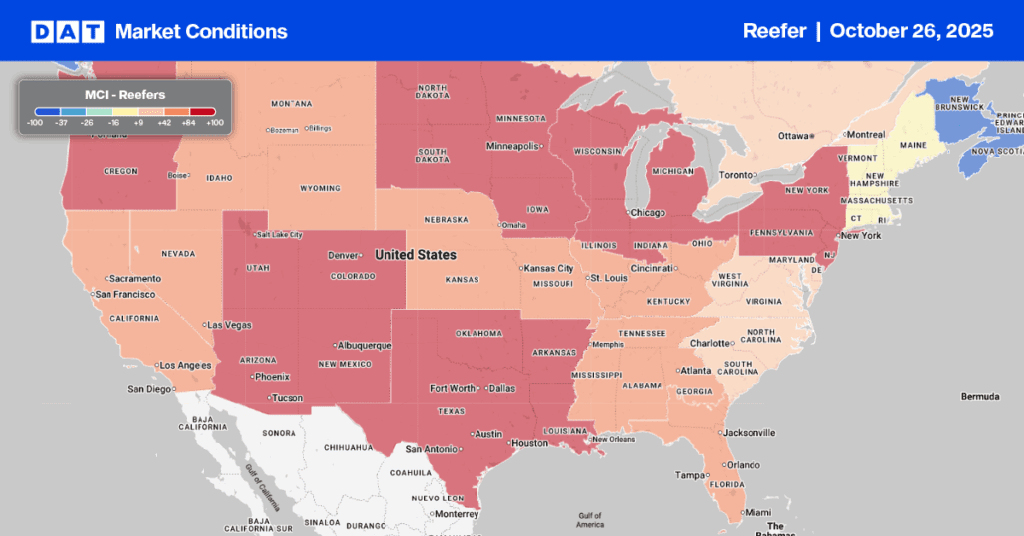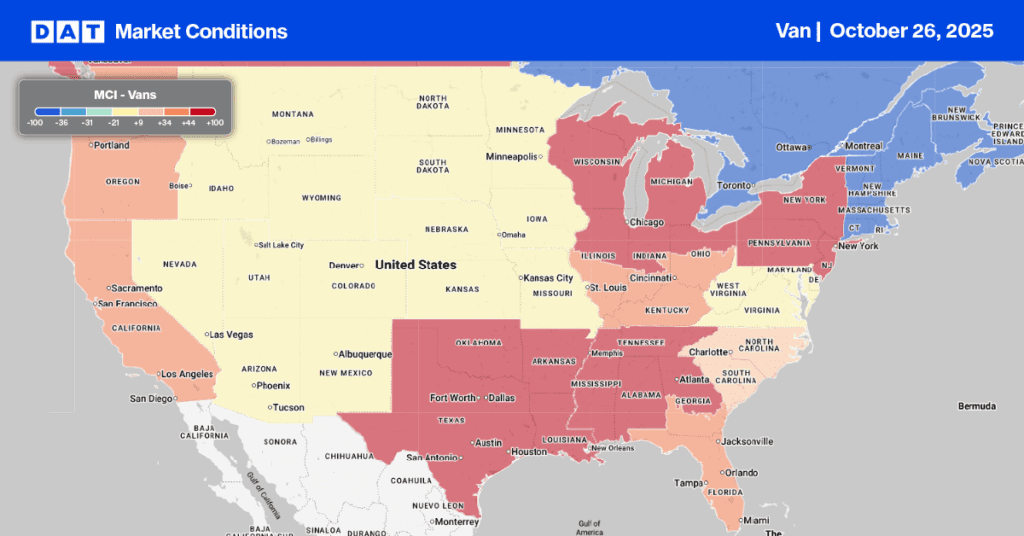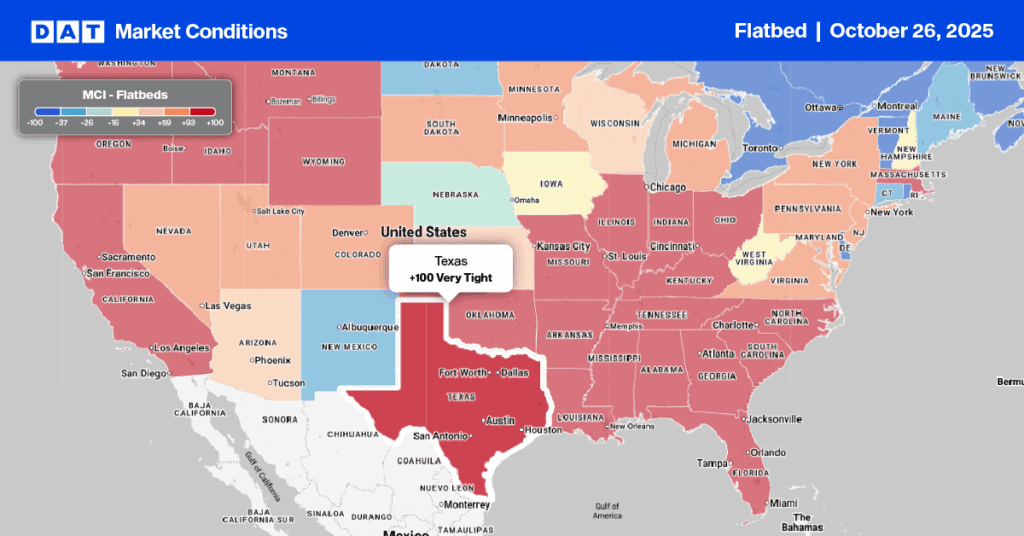The Port of Los Angeles and neighboring Port of Long Beach comprise the San Pedro Bay Port Complex, which handles more containers per ship call than any other port complex in the world.
On any given day, there’s a long line of ultra-large container vessels off the coast of Los Angeles waiting to unload cargo. Nineteen container vessels were anchored on Monday, April 19, with an average eight-day wait time to unload. This time last year, there was only one anchored vessel waiting to unload.
It’s a similar story in the port. According to The Marine Exchange data, the 24 vessels docked and unloading last week was half the entire April 2020 volume.
Get the clearest, most accurate view of the truckload marketplace with data from DAT iQ.
Tune into DAT iQ Live, live on YouTube or LinkedIn, 10am ET every Tuesday.
According to the PIERS database provided by IHS Markit, the San Pedro Bay port complex handled 33% of all loaded import containers in the U.S. and 75% of all import containers on the West Coast in March.
110-year-old record shattered
Just last month, the Port of Long Beach reported loaded import containers volumes were up 48% year-over-year. This broke a 110-year-old record for the most containers handled in a month.
On the shipping calendar, March is typically one of the slowest months for imports, which makes this record more remarkable.
The new record comes as consumers “continued to practice physical distancing guidelines in March and turned their computers into virtual shopping malls,” the Port of Long Beach said in a statement. Next door at The Port of Los Angeles — the larger of the two ports in the San Pedro Bay Port Complex — March import volumes were up 107% y/y.
Furniture was the number one import commodity at 15% of all imported containers. As consumers continue to work and spend more time at home because of the pandemic, furniture container volumes continue to increase. Furniture container volumes have tripled the volume compared to March last year.
China remains the dominant source of West Coast imports:
- China: 60%
- Vietnam: 9%
- Taiwan: 7%
- South Korea: 7%
Container volumes from China in March were up 144% y/y. However, those numbers hide a longer-term trend that’s been developing since last August when import container volumes peaked. Since then, loaded import volumes at the Port of Los Angeles have decreased by 5% while congestion levels at the port remain high and expected to continue well into summer.
Volumes drop, rates rise and capacity tightens
DAT has also seen record levels of load posts on the Los Angeles spot market. But more recently, we’ve seen declining volumes and increasing spot rates as capacity continues to tighten. This suggests a strong positive correlation between import volumes and load posts in the Los Angeles market since January 2020.
For example, the highest dry van volume lane from L.A. to Phoenix (8% of load posts) has three-day rates of $4.01/mile this week. The rate has almost doubled from last year at the same time, and is close to $1.00/mile higher than February’s average monthly rate.
There’s a similar tight capacity situation on the L.A. to Stockton, CA, lane where three-day rates are at $3.53/mile — $1.44/mile higher than this time last year and $0.44/mile higher than February’s average.
Capacity is also very tight in nearby Ontario, CA, where a high volume of import containers are warehoused before being moved to their final destinations.
No matter which lane we look at — and despite the ongoing port congestion — West Coast capacity is tight and rates are heating up, even though import container volumes appear to be cooling.
The L.A. and Ontario freight markets combined represent around 5% of weekly load post volumes, which makes it the largest freight region in the country — and one to watch closely.


